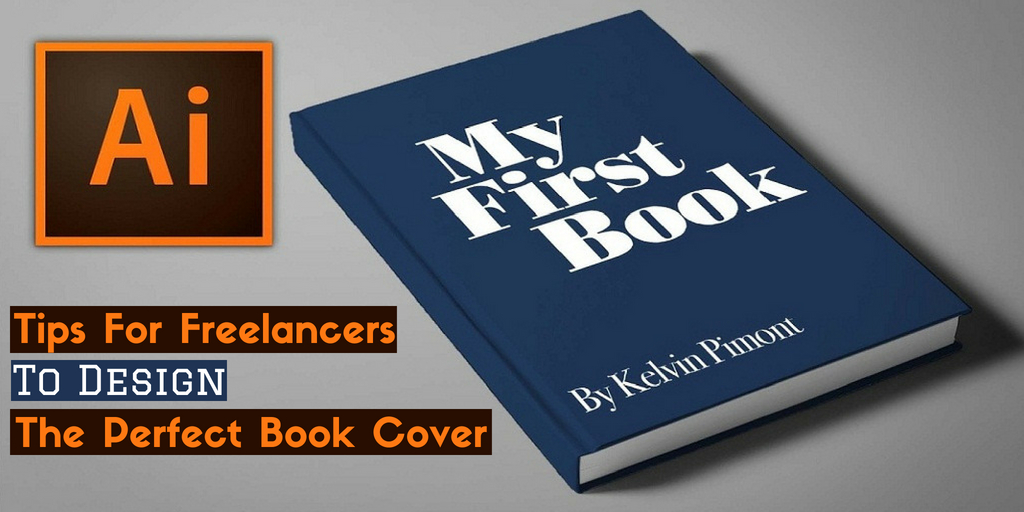
A book cover is an essential aspect of a book that is materially responsible for drawing readers into buying the book. The design of the book should be such that it appeals to both the viewer’s eyes and appetite for reading. Therefore, an author must pay great attention to how a book cover is designed.
Whenever authors hire book-cover designers, they have a number of expectations from them. These expectations usually form the essence of how a book cover should be designed and so, must be respected by designers.
Most of the time you will come across book-cover designers working as freelancers because working this way brings more work. However, the multiplicity of work does not excuse designers from their responsibility to show complete respect and dedication towards every work they undertake. Every author with whom they work has certain expectations which must be met rightly.
Designing a book cover is not easy, and to meet such expectations, we must keep in mind a few things of great assistance. These tips have been enumerated below and offer a general idea of how one must go about designing book covers. So, here are 8 such tips for freelance book-cover designers.
1. Think From The Perspective Of The Author
You, as a designer, may have a variety of ideas on how to go about a book cover, but you must not deviate from the essence which the author wants. You will have to think from his perspective and design the cover.
To understand the intentions of the author better, you should read the book in its entirety so that you can grasp the themes, emotions, and motives behind it clearly. With such an approach, your design will be able to reflect the essence of the book.
2. Ensure The Readability Of The Title
However creative your design is, lack of a readable title of the book can ruin all your efforts. It is, therefore, important that you pay attention to how a title is created on the book cover.
The title must look reasonably big and be written in a legible font. It is recommended that you avoid using Papyrus or Comic Sans. Moreover, do not use any other font which is way stylised or complicated to be readily understood. Your task is to make title instantly readable, and for that to happen, choose your style and fonts wisely.
3. Think Fresh
There is no way you can survive long with hackneyed ideas; you will have to muster up your designing capabilities. So, consider employing fresh designs instead of the ones which are usually used.
Of course, we understand that it is easy said than done. There are many themes which have been designed countless times and that it becomes laborious to come up with a new idea. But, such is the life of a designer and there is no way out.
One way to come up with new ideas is by reading the book. When you read it, you will come across its various sub-themes which can help you incorporate new elements into your design. This way you will make the design more relatable to the particular theme of the book, giving a certain degree of specificity.
4. Submit Drafts Before Finalising
You should consider getting feedback from the client regularly. To ensure that this process is smooth, it is advised that you submit drafts on a periodic basis before finalizing a cover. This way you will be able to get feedback, discuss changes, incorporate changes, and work in a better manner.
Your job is to create a cover which not only expresses the theme of the book but also the intention of the author. So, you must hold regular consultations by submitting drafts.
5. Do Not Complicate The Design
When not needed, do not try showing off your skills unnecessarily. If the design could be created simply, then you should avoid complicating it.
Quite contrary to what people think, less is often good. However, it all depends on what kind of book you are working on and what the author wants you to do. Whatever you create, it should make sense to the author and readers.
6. Focus ALSO On The Back Cover
It is not just the front cover which inspires excitement and interest among readers; the back cover is equally relevant. Therefore, it is suggested that you give some touch-up to back covers too.
For back covers, you should make it informative. While you can incorporate creative elements in how you present information, the back cover should largely remain informative. This is so because people often turn back and read summaries for deciding whether or not to buy a book. Creative elements may not necessarily make them buy books but can influence their decisions.
7. Check Out Book Covers
There is no harm in checking other book covers on the genre you are working. In fact, it helps you gather information on what is popular and what is out-dated. Such an approach will also give you an idea of what elements are being overused and thus, you should avoid inculcating them in your design.
The more you check out book covers, the more confident you will be in the uniqueness of your design.
8. The Design Should Tell The Story
We have stressed on the need for a book cover reflecting the essence of the book, and here, under this head, we will talk about this in detail.
Whatever design you create, it should be such that it instantly tells you what the book is about. The message conveyed through the design should be transformed into a graphical representation in such a manner that the buyer does not feel the need to read the summary.
One tip that can help you in this regard: focus on the main element(s) of the book. For example, if it is fiction romance, there will be many side plots which you will have to identify and not include in your design. The book cover should give out clearly the romantic elements pervading throughout the book.
Who does not like book covers? Well, everyone with even a minute appreciation of art does. These covers are created with great hard work and patience, and the people behind these covers deserve as much appreciation as the author of the book himself. These book cover artists—the good ones—work systematically, keeping all necessary factors in mind while creating a cover.
In this article, we tried enumerating many of those things for the guidance of our freelance book cover designers. We hope that our tips help our fellow freelancers in the creation of laudable book covers. But, we cannot know unless you tell your opinion. Hence, we would like to hear from our readers what they think about this article.
Moreover, we would like to bring on-board more people so that we can work towards arranging a bigger discourse on this topic. Hence, we will greatly appreciate you sharing our article to the world out there.




